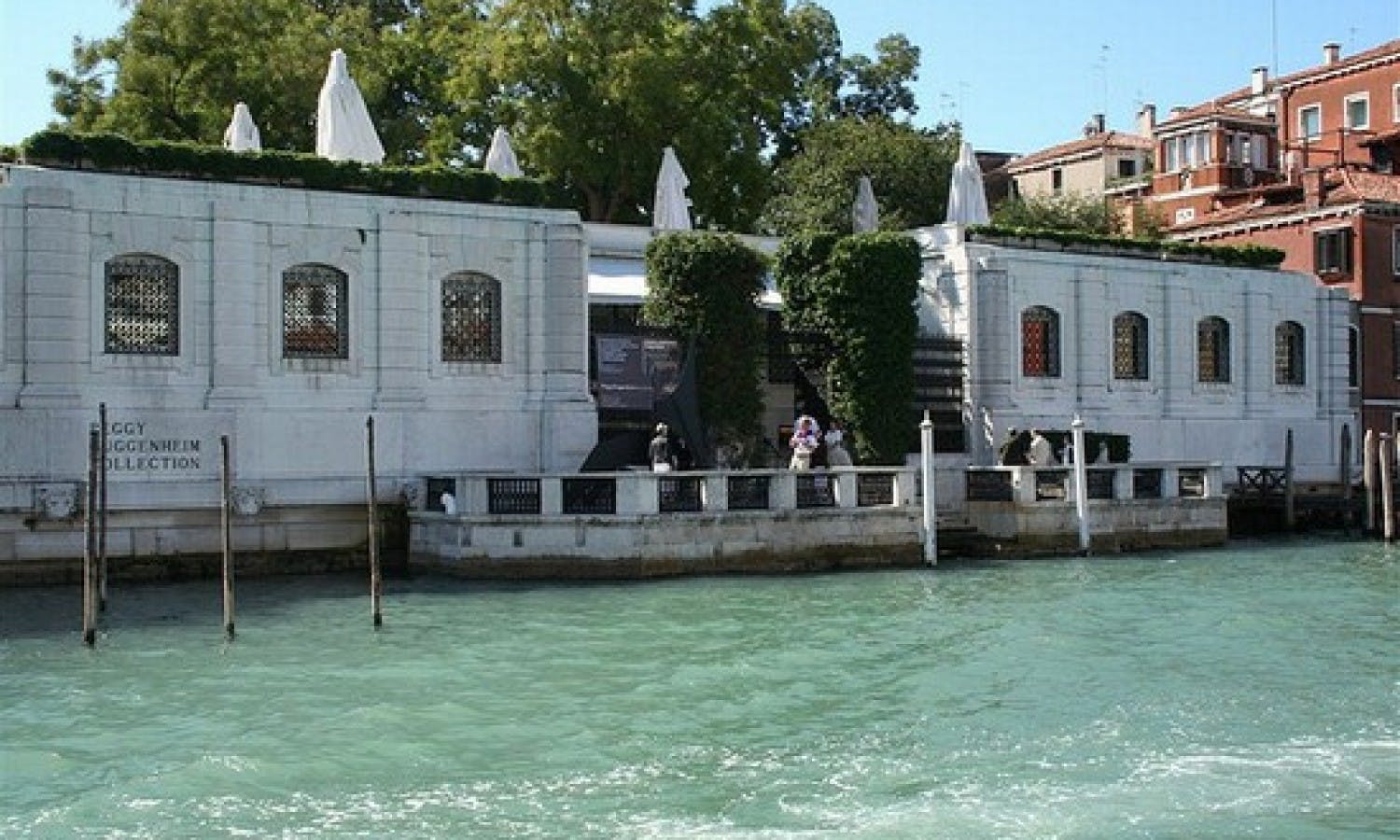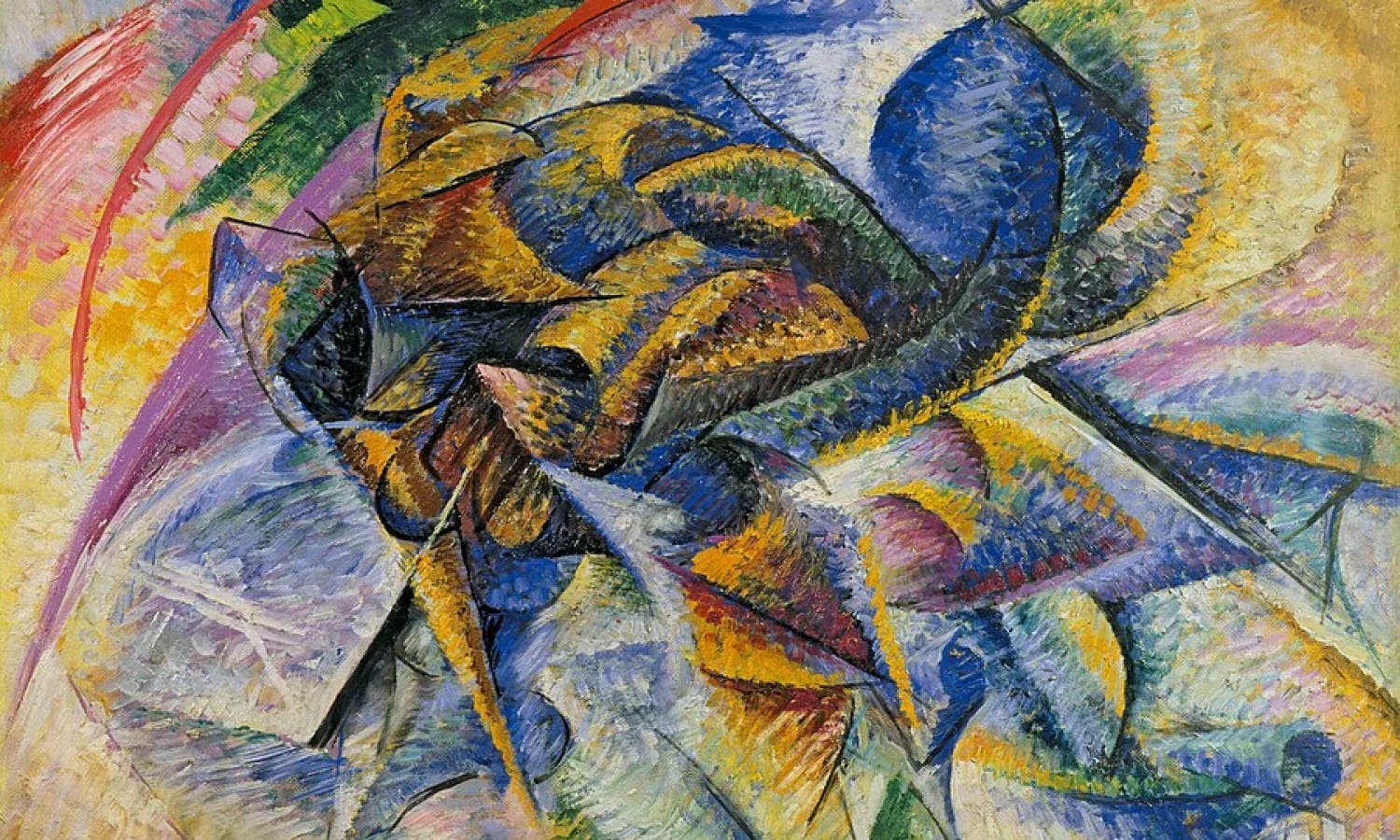Visiting the Peggy Guggenheim Collection in Venice will bring you into direct contact with the greatest masterpieces of this past century. It also means that you get to learn the life story of a woman who was a great promoter of the arts.
Visiting the Peggy Guggenheim Collection in Venice will bring you into direct contact with the greatest masterpieces of this past century. It also means that you get to learn the life story of a woman who was, in the world of modern art and the development of art in general, a great protector and promoter of the arts. This museum holds the personal collection of Peggy Guggenheim in a building that was the private residence of this wealthy art collector. It is one of the greatest sites for European and American art from the mid-20th century.

Palazzo Venier dei Leoni from the Grand Canal
Peggy’s Life
To fully understand Peggy and her art collection, it’s important to understand it in the context of her life and the passion that brought her to constantly search for new masterpieces.
Peggy Guggenheim was born in New York at the end of the 1800’s, into an important Swiss family that had made its fortune in the precious metals industry. Artistic inclination has always run strong in this family: Peggy’s uncle, Salomon R. Guggenheim, was in fact the founder of the Guggenheim in New York.
Peggy was a young and wealthy woman who started working with art almost by chance. She found out that she was very good at discovering new talents and her intuition told her that art, in just a few years, was about to undergo a profound transformation. Peggy loved art and she loved artists. She was constantly searching for beauty. She surrounded herself with young artists who she encouraged, protected and involved in her very bohemian life.
Duchamp was her maestro and she his protégé. He introduced her into the world of art in 1938. Peggy later moved to London and opened her first gallery, buying countless masterpieces. She used to say that, since she didn’t have the funds to invest in the great masterpieces of the past, she would put her money into something that seemed promising for the future. She invested in un-known artists of her time like Dalì, Kandinskij, Tanguy, and as history has shown us, Peggy made smart investments.

Peggy Guggenheim
In 1941, escaping from a war-ridden Europe, Peggy flew to New York, bringing with her some artists of Jewish origin. Among these was Max Ernst, her future husband. In New York the new 20th century, art was born and Peggy quickly became the connection between American and European artists. The collection in Palazzo Venier in Venice came to life. In 1943, Peggy purchased pieces by Klee, Magritte, Malevich and many other artists that later became well known names in the history of modern art. In the same year Peggy became art dealer for Jackson Pollock and she offered him a contract with a monthly salary to let him work on his art full-time. Peggy opened a gallery in New York called Art of this Century, the very first interactive gallery experience. The original exhibitions transformed a gallery visit into a game, a sort of treasure hunt where you are rewarded with the unveiling of the pieces on display.
Peggy arrived in Italy in 1948 and she displayed her collection at Venice’s Biennale. For the first time in the history of the Venetian Biennale, a pavilion was created to present a private collection. There were 140 pieces on display and the exhibition was very popular. Peggy then decided to stay in Italy and she quickly became a reference point and important member of the international community in Italy. She continued collecting paintings, sculptures and jewelry with passion and she loved being photographed. She lived in symbiosis with the art that she surrounded herself with, in her home that became a museum after her passing.
The collections

Dynamism of a Cyclist – Umberto Boccioni – 1913
The Peggy Guggenheim, open to the public since 1980, holds a permanent collection that includes some of the greatest masters from the 20th century. Among masterpieces of Cubism, Futurism and European Abstract art displayed in the rooms of Palazzo Vernier, we find works by Picasso, Duchamp, Léger, Brancusi, Mondrian, De Chirico and the unforgettable Pollock: there are 11 pieces by this American artist whom Peggy worked with so closely. These artworks, made between 1942 and 1947, are important for our understanding of Pollock’s artistic development. Comparing the painting ‘The Moon Woman” (1942) with “Alchimia” (1947) we can see clearly the moment when the artist went from a figurative and more traditional art to the dripping technique that gave him world-wide fame.
Since 2012, the also museum holds the collection of Hannelore B. and Rudolph B. Schulhof, 80 works of art from post-war Italy, Europe and America. Visiting Peggy Guggenheim you will also have the chance to see the 26 pieces from the Gianni Mattioli collection that includes some masterpieces from Futurism, like the “Dynamism cyclist” by Boccioni and the “Interventionist manifestation” by Carrà.
Last, but not least, in the Sculpture Garden found at Palazzo Venier, and in the other open-air exhibitions at the museum, you’ll see the collection belonging to the Patsy R. and Raymond D. Nasher Sculpture Garden. Here you’ll lay your eyes on the famous “Angel of the City” by Marino Marini, that Peggy placed right at the entrance of her home.
Palazzo Venier dei Leoni

Angel of the City
Palazzo Venier dei Leoni stands out in the landscape of the Grand Canal because it is the only building placed directly on the water that remains unfinished. Construction began in 1748, based on a project of Lorenzo Boschetti, but the project never continued past the ground floor. Purchased by Peggy, she made it into the home of her collection at the end of 1948; during its long history Palazzo Venier had already been a part of the ‘artistic’ world with its previous owner the Marquise Luisa Casati, muse of artists like Man Ray. There are different theories that try to explain why the building was never finished; some say it was for lack of funds, others for a feud among powerful Venetian families. The fact is that Palazzo Venier, with its unique shape and for the view on the Grand Canal, makes it the perfect home for the unique and original artwork held in the Guggenheim collection. Where: Palazzo Venier dei Leoni, Dorsoduro 701 – Venice Hours: Open every day from 10.00 am to 6.00 pm. Closed on Tuesdays and the 25th of December. Tickets: To plan your trip we suggest buying your Guggenheim Venice ticket on Musement.
